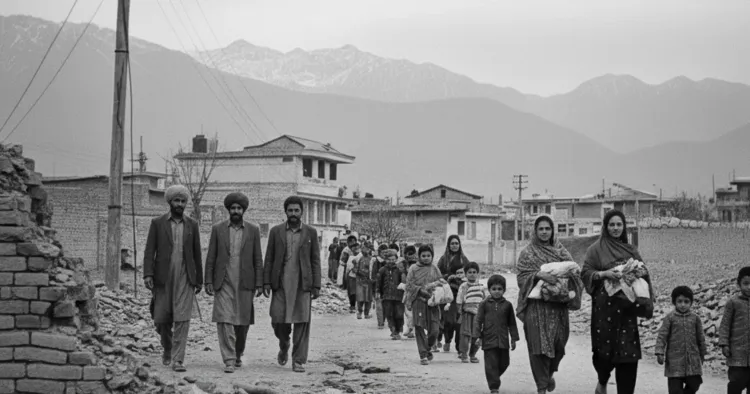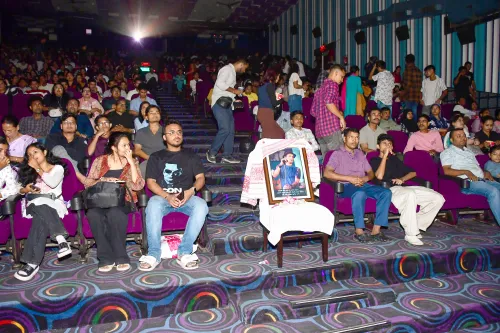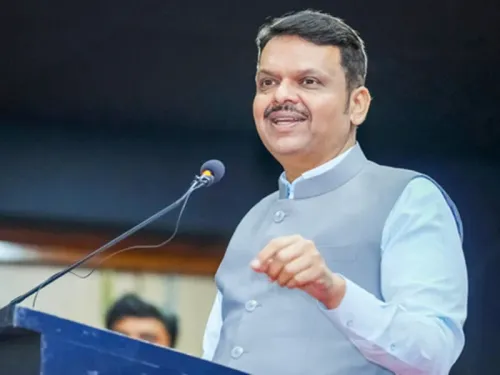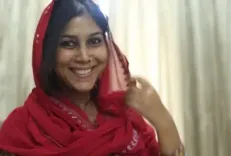FairPoint: Are the Forgotten Cries for Justice from 1984 to the Kashmiri Hindu Exodus Finally Being Heard?

Synopsis
Key Takeaways
- Union Minister Hardeep Singh Puri's statement reveals ongoing injustices faced by the Sikh community.
- The 1984 riots continue to be a painful chapter for those affected.
- The plight of Kashmiri Hindus remains largely ignored.
- Systematic investigations into historical atrocities are crucial for justice.
- Political relevance often influences the pursuit of justice in India.
New Delhi, Nov 2 (NationPress) It's never straightforward for a sitting Union Minister to publicly discuss the anguish experienced by him and his community during a time of widespread violence. Yet, Union Minister Hardeep Singh Puri recently took that step, recalling the horrific events faced by the Sikh community following the assassination of then Prime Minister Indira Gandhi in 1984.
His poignant social media post revealed the trauma suffered by him and his community, explicitly naming the Congress party and its senior leaders as the instigators of that violence. His expression of sorrow, even after 41 years, underscores not only the depth of that trauma but also the systemic failure to deliver justice in a timely manner.
More than four decades have passed, yet the community still battles for justice, awaiting judicial closure. Over the years, the 1984 riots have been investigated by at least four commissions and committees — the Justice Ranganath Misra Commission (1985), the Jain–Aggarwal Committee (1990), the Narula Committee (1993), and the Justice Nanavati Commission (2000). All of these bodies submitted reports; some cases reached the courts, verdicts were delivered in a few, but many remain unresolved. Although the justice process has been sluggish, there has at least been an acknowledgment of the wrongdoing and a mechanism to address it, albeit imperfect.
The pain articulated by Hardeep Singh Puri represents first-hand suffering — something the current generation can only imagine. Yet, at least his community's case was investigated, commissions were established, and victims were given a platform to voice their grievances and identify the culprits.
Sadly, other communities have endured similar atrocities, have been displaced from their homes, and have yet to receive even the dignity of a formal investigation.
The ethnic cleansing of Kashmiri Hindus is one of the most tragic and overlooked chapters in India’s contemporary history. A community exceeding seven lakh individuals was systematically targeted in the Kashmir Valley during the early 1990s. Threatened, assaulted, and murdered, they were compelled to abandon their ancestral homes. Hundreds were brutally killed, and countless women were gang-raped and slain. Homes were looted or seized, temples desecrated and burned, and entire neighborhoods emptied. Within months, the two percent Hindu minority of the Valley had almost completely disappeared.
Yet, in the 35 years since, neither the Central government nor the former state administration of Jammu and Kashmir (prior to the abrogation of Article 370) has established any commission or committee to investigate the atrocities or to bring the perpetrators to justice. No human rights organization has taken up their cause. Their tragedy has largely remained invisible, overshadowed by the politics surrounding Kashmir.
The displaced community has lived in silence, occasionally staging peaceful protests to draw attention to the discrimination and neglect they have faced.
Even the National Human Rights Commission (NHRC) did not deem the exodus horrific enough to classify it as genocide. It recorded its position, acknowledging "acts akin to genocide" and a "genocide-type design" in a decision made in June 1999. This statement was part of a ruling in which the Commission noted that the crimes against the Kashmiri Pandits, while undoubtedly grave, did not meet the strict legal definition of genocide under the Genocide Convention.
The judiciary has also failed to respond adequately to the plight of the Kashmiri minorities. The Supreme Court has repeatedly dismissed appeals from the community, including a curative petition submitted by the NGO Roots in Kashmir, which sought a Special Investigation Team (SIT) probe into alleged mass murders and the "genocide" of Kashmiri Pandits in 1989–90.
The Court cited the significant passage of time, noting that evidence was likely to have been lost and that reopening the matter after so many years would serve no practical purpose. The petitioners drew parallels with the 1984 anti-Sikh riots, where the Court later ordered an SIT probe. However, the Court did not find grounds for intervention in the Pandit case within the limits of a curative petition. In some instances, it directed petitioners to first approach the Central or Union Territory governments, asserting that such issues fall under the executive's policy domain.
In December 2023, a five-judge bench of the Supreme Court upheld the Union government’s decision to abrogate Article 370. Justice Sanjiv Kishan Kaul wrote an emotional epilogue in his judgment, advocating for the establishment of a Truth and Reconciliation Commission, similar to that in post-apartheid South Africa. “This Commission should be formed swiftly before memories fade,” he stated. “The process should be time-bound. An entire generation has grown up with feelings of distrust, and it is to them that we owe the greatest duty of reparation.”
In a media interview, Justice Kaul revealed that his own ancestral home had been burned during the exodus of Kashmiri Pandits. He poignantly noted that perhaps the community did not garner political attention because it was not “a large enough electorate.” That statement may encapsulate the essence of their prolonged neglect.
India is undeniably a vibrant democracy with robust institutions and an efficient administrative framework. However, the deep politicization of every issue has hampered the country's ability to respond to human suffering justly and promptly. Communities like the Kashmiri Hindus feel that justice and political support remain elusive, as they are neither a significant vote bank nor a wealthy group capable of influencing outcomes. Their anguish seldom receives attention in political discourse or media discussions.
The Sikhs, although a politically significant community with their own state and a strong collective identity, still bemoan that justice for 1984 has not been fully realized. For the Kashmiri Hindus, hope seems to be dwindling.
Both narratives highlight a deeper issue — that in India, the quest for justice often relies not solely on law and morality, but on political relevance. As long as the worth of a community’s suffering is measured by electoral numbers or media visibility, the concept of equal justice will remain out of reach. Until that shifts, the cries of the forgotten will continue to resonate unheard in the world’s largest democracy.
(Deepika Bhan can be contacted at deepika.b@ians.in)









